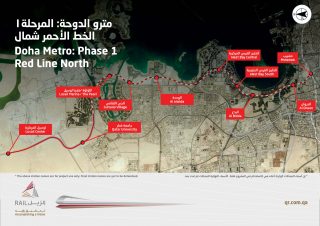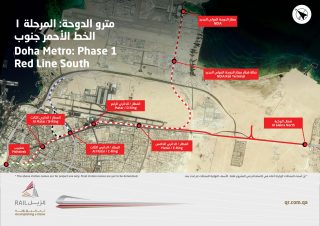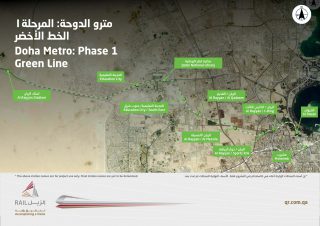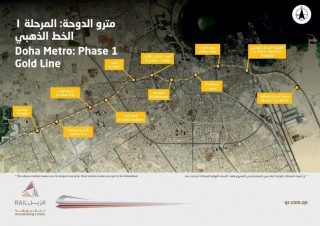
Contractors on the Doha Metro are currently working to fix a boring machine that suffered damage after part of the Red Line North tunnel flooded last month, Qatar Rail has confirmed.
Multiple individuals working on the project who spoke to Doha News on the condition of anonymity said the incident happened in late February and occurred several hundred meters away from Msheireb in the direction of the Emiri Diwan.
A spokesperson confirmed to Doha News that the incident occurred and said in a statement that no one was injured.
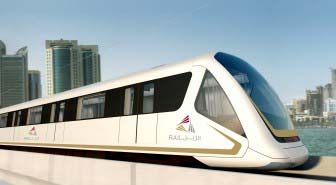
Qatar Rail added that it did not believe the flooding would have “any significant impact” on the Red Line, which will run between Msheireb and Lusail, or the overall Doha Metro project, which is scheduled to welcome passengers in 2019.
However, more than one contractor expressed skepticism that the project timelines would be unaffected despite the TBM being out of commission.
Qatar Rail did not provide any details about what exactly happened, except to say that the flooding occurred during “pilot tunneling operations.”
Pilot tunnels are typically small-diameter holes bored in advance of, or parallel to, the main tunnel that are used to gather detailed information about the underground soil, sand and rock conditions.
The Red Line North consists of two twin tunnels, only one of which was affected by flooding, Qatar Rail said.
What’s next
Msheireb will be one of the flagship stations of the Doha Metro and a major transfer point for passengers, connecting all four lines currently under construction.
They include:
- The Red Line North, running from a connection with Lusail’s light-rail line to Msheireb via West Bay;
- The Red Line South, running from Msheireb to Hamad International Airport;
- The Green Line, running from Al Rayyan Stadium to Msheireb via Education City; and
- The Gold Line, running from Villaggio Mall to the area around the old Doha International Airport, via Msheireb.
The metro will also connect to two other separate rail projects: The Lusail light-rail line, which contractors say will be operational by 2018 and a long-distance passenger and freight service that will initially run between Education City and Saudi Arabia.
One source said there is a surprising amount of subterranean water in Qatar, despite its dry desert climate, and that the water entering the tunnel is likely being forced in from Doha Bay.
He said extensive soil testing was done prior to any digging, but there happened to be a weakness in the earth between two test sites.
“They can’t test every meter of the way,” the man said. “It’s just rotten luck.”
He added that the high salinity of the seawater entering the tunnel added to the damage done to the tunnel boring machine (TBM), which the man said was still submerged as of last week.
Tunneling challenges
The incident involving the Doha Metro isn’t the first time a TBM has been damaged by floodwater.
In 2012, saltwater badly corroded a TBM that was digging a tunnel for a new water line under a sea channel in the New York City Harbor. At that time, a hurricane flooded the tunnel and submerged the TBM, necessitating the replacement of corroded hydraulic components and electrical systems, and delaying the project.

TBMs are commonly used to dig through rock and soil to make way for underground rail lines and other major projects.
To help meet its tight deadlines, Qatar has imported nearly two dozen TBMs from Germany, each worth millions of dollars.
All 21 machines, which are so massive they need to be shipped in parts and take months to reassemble once they reach Qatar, are expected to be in operation this year.
A spokesperson for Herrenknecht, which supplied Qatar’s TBMs, declined to comment on the damage to its equipment when contacted by Doha News.
Qatar Rail previously said that the TBMs were expected to travel at a speed of between 12 and 21m per day, depending on soil conditions.
This year, more than 600 cubic meters of material are expected to be excavated daily, and some of what’s taken out of the ground will be reused in the construction of Qatar’s long-distance rail line.
Thoughts?


